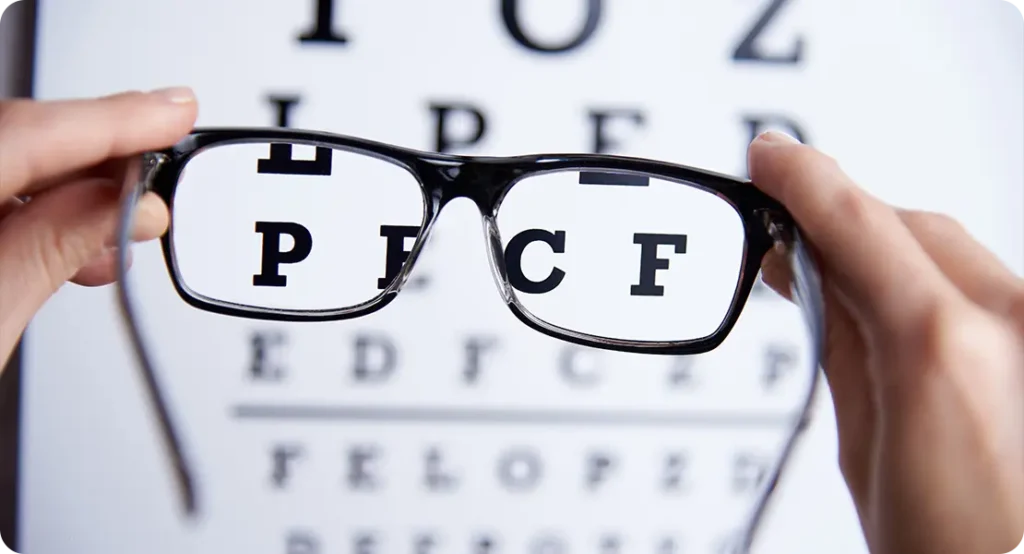Cataracts are a common age-related eye condition that affects millions of people worldwide. They occur when the natural lens of the eye becomes cloudy, leading to a gradual decline in vision. Although ageing is the primary cause of cataracts, various types exist, each with distinct characteristics and effects on vision. Understanding these different types is crucial for early detection and appropriate treatment.
1. Nuclear Sclerotic Cataracts
Nuclear sclerotic cataracts are the most common type of age-related cataracts. They develop in the central portion of the lens, known as the nucleus. Over time, the lens gradually hardens and turns yellow or brown, affecting the ability to focus on nearby objects. This hardening results from the gradual accumulation of proteins within the lens, leading to increased light scattering and a reduction in overall visual clarity.
One of the hallmark features of nuclear sclerotic cataracts is the slow progression of symptoms, which can take years or even decades to significantly impact vision. At the early stages, individuals may notice an improvement in their near vision due to increased refractive power in the lens. This phenomenon, sometimes referred to as ‘second sight,’ allows individuals to read or see fine details up close without the need for reading glasses. However, this effect is temporary, and as the cataract worsens, overall vision deteriorates.
As the lens continues to harden and darken, the ability to distinguish finer details diminishes. Colours may appear dull or yellowed, affecting perception of contrast and making everyday activities, such as choosing matching clothing or reading road signs, more challenging. Additionally, nuclear sclerotic cataracts lead to increased light scatter, making it particularly difficult to see in dim lighting or bright sunlight.
One of the most noticeable effects of this type of cataract is difficulty with night vision. Many individuals report excessive glare and halos around lights, making driving at night particularly hazardous. Headlights, streetlights, and illuminated signs may cause significant visual discomfort, leading to increased sensitivity to bright lights. This can also make it difficult to transition between different lighting conditions, such as moving from a brightly lit room to a darker environment.

Symptoms:
- Gradual blurring of vision
- Increased difficulty with night vision
- Enhanced near vision (a temporary improvement known as ‘second sight’)
- Colours appearing faded or yellowed
- Increased sensitivity to bright lights and glare
- Difficulty distinguishing fine details, particularly in low contrast settings
- Challenges with depth perception, making tasks such as walking down stairs or pouring liquids more difficult
As this type progresses, it can significantly impair distance vision, making tasks such as driving more challenging. Unlike some other types of cataracts, nuclear sclerotic cataracts tend to develop symmetrically in both eyes, although the severity may differ between them. If left untreated, the lens may eventually become completely opaque, leading to severe vision loss.
Since this condition develops gradually, many individuals may not notice the changes immediately. Regular eye examinations are crucial in detecting nuclear sclerotic cataracts early and monitoring their progression. In the initial stages, updating glasses prescriptions and using anti-glare coatings on lenses may help manage symptoms. However, when the cataract begins to interfere with daily activities, surgery is the only effective treatment. Cataract surgery involves replacing the clouded lens with an artificial intraocular lens (IOL), restoring clear vision and significantly improving quality of life.
2. Cortical Cataracts
Cortical cataracts form in the outer layer (cortex) of the lens and gradually extend towards the centre in a spoke-like pattern. These cataracts result from changes in the water content of the lens fibres, causing them to become opaque. Unlike nuclear sclerotic cataracts, which develop centrally, cortical cataracts affect the outer edges of the lens first, progressively working their way inward.
This distinctive pattern of development often leads to issues with depth perception and peripheral vision. In the early stages, cortical cataracts may not significantly impact central vision, but as the opacities extend inward, they can begin to interfere with daily activities such as reading and recognising faces.
One of the most noticeable effects of cortical cataracts is the disruption they cause in the way light enters the eye. The affected areas of the lens scatter light, leading to excessive glare and halos, particularly in bright conditions. Many people with cortical cataracts struggle with direct sunlight or the glare from headlights while driving at night. This light scattering effect can be particularly problematic in situations that require strong contrast vision, such as reading printed text or distinguishing objects in a bright environment.
As cortical cataracts progress, they can cause visual distortions, such as double vision or ghost images in one eye. This occurs due to the uneven clouding of the lens, which bends light inconsistently as it passes through the eye. These distortions can make it challenging to focus on a single object, further complicating everyday tasks.
In some cases, cortical cataracts may progress rapidly, particularly in individuals with underlying health conditions such as diabetes. High blood sugar levels can accelerate changes in the lens structure, causing cataracts to develop at an earlier age and worsen more quickly than in non-diabetic individuals.
Symptoms:
- Increased sensitivity to glare, particularly from headlights at night
- Difficulty distinguishing contrast in bright conditions
- Blurred or hazy vision
- Light scattering, leading to glare and halos around lights
- Distorted vision, including double vision or ghosting in one eye
- Reduced depth perception, making activities such as stair navigation or sports more difficult
- Peripheral vision impairment before central vision is affected
3. Posterior Subcapsular Cataracts
Posterior subcapsular cataracts (PSC) develop at the back of the lens, directly in the path of incoming light. This type progresses faster than nuclear or cortical cataracts and can significantly impair vision in a short time. PSC affects the eye’s ability to focus on nearby objects, making tasks such as reading, using digital screens, or recognising faces more difficult.

Unlike other cataracts, PSC tends to cause noticeable symptoms early, particularly under bright lighting conditions. The opacities in the posterior lens scatter light, leading to pronounced glare, halos, and difficulties with contrast sensitivity. The effects are often more pronounced when moving between different lighting conditions, such as stepping from a dark room into bright daylight.
Symptoms:
- Difficulty reading or seeing in bright light
- Increased glare sensitivity, especially in daylight or from artificial lights
- A ‘halo’ effect around lights
- Reduced near vision
- More pronounced visual impairment in bright environments compared to dim settings
PSC is more common in individuals with diabetes, those who use steroids long-term, or those who have had significant exposure to ultraviolet (UV) radiation. It can also develop as a side effect of radiation therapy or as a complication following eye surgery.
4. Mixed Cataracts
In some cases, people may develop a combination of nuclear sclerotic, cortical, and posterior subcapsular cataracts. These are known as mixed cataracts, and they present with a blend of symptoms associated with the different types. The presence of multiple cataract types can make diagnosis and treatment planning more complex, as different areas of the lens are affected simultaneously, leading to varied vision impairment.

Surgery remains the most effective treatment for mixed cataracts, allowing for the removal of the clouded lens and its replacement with a clear artificial intraocular lens (IOL) to restore optimal vision.
Risk Factors for Age-Related Cataracts
Although ageing is the most significant risk factor for cataracts, several other factors can contribute to their development:
- Genetics – A family history of cataracts increases the likelihood of developing them. Genetic predisposition plays a crucial role in cataract formation. If one or both parents developed cataracts at an early age, there is a greater chance that their children will also develop them. Certain inherited conditions that affect protein stability within the lens may accelerate the onset of cataracts. Additionally, genetic mutations that impair the body’s ability to repair oxidative damage may contribute to faster cataract progression, particularly when combined with environmental risk factors such as UV exposure or smoking.
- UV Exposure – Prolonged exposure to sunlight without adequate eye protection can accelerate cataract formation. Ultraviolet (UV) rays from the sun have a cumulative effect on the eyes, gradually breaking down proteins within the lens. This damage leads to the clouding associated with cataracts. Individuals who spend significant time outdoors without wearing UV-protective sunglasses are at an increased risk of developing cataracts earlier in life. Additionally, artificial sources of UV light, such as tanning beds, can have similar detrimental effects. Wearing wide-brimmed hats and sunglasses with UV-blocking lenses can help mitigate this risk.
- Smoking and Alcohol Consumption – Both are linked to an increased risk of cataracts. Smoking contributes to oxidative stress in the eyes, which leads to cellular damage within the lens. The chemicals in cigarette smoke create free radicals that deteriorate the proteins and lipids necessary for maintaining lens transparency. Chronic smokers are at a significantly higher risk of developing cataracts compared to non-smokers. Alcohol consumption, especially in excessive amounts, can have similar effects, as it depletes antioxidants in the body that would otherwise help prevent oxidative damage to the lens. Reducing or quitting smoking and moderating alcohol intake can lower the risk of cataract development.
- Diabetes – High blood sugar levels can damage the lens over time. Diabetes is a well-known risk factor for cataracts, particularly in individuals with poorly controlled blood sugar levels. Excess glucose in the bloodstream leads to the accumulation of sorbitol in the lens, which disrupts normal cellular function and promotes the clouding of the lens. People with diabetes also experience higher levels of oxidative stress, which accelerates cataract progression. Managing blood sugar levels through diet, exercise, and medication can help slow the development of cataracts in diabetic individuals.
- Medications – Long-term use of corticosteroids is known to contribute to cataract formation. Corticosteroids, commonly used to treat conditions such as asthma, arthritis, and autoimmune diseases, have been linked to the development of cataracts, particularly posterior subcapsular cataracts. These medications affect the metabolism of lens proteins, leading to opacities that can rapidly impair vision. Individuals who require long-term steroid therapy should have regular eye exams to monitor for early signs of cataract development. In some cases, alternative treatments with fewer ocular side effects may be considered to minimise this risk.
Diagnosis and Treatment
Early detection of cataracts can help slow their progression. An eye specialist can diagnose cataracts through a comprehensive eye examination, which typically includes a slit-lamp test to assess the structure of the lens, a visual acuity test to measure the clarity of vision, and a dilated eye exam to evaluate the severity of the cataract. In some cases, additional tests such as contrast sensitivity assessments or glare testing may be conducted to determine the extent of visual impairment caused by the cataract.
For individuals in the early stages of cataract development, non-surgical management strategies can be beneficial. These include using brighter lighting when reading or performing tasks, wearing anti-glare glasses to reduce sensitivity to light, and updating eyeglasses prescriptions to compensate for changes in vision. Additionally, maintaining a healthy lifestyle with a balanced diet rich in antioxidants, quitting smoking, and protecting the eyes from excessive UV exposure can help slow the progression of cataracts and preserve visual function for as long as possible.
However, when cataracts begin to significantly impact daily life—such as making it difficult to drive, read, or recognise faces—surgical intervention becomes the most effective treatment. Cataract surgery is a relatively quick and highly successful procedure in which the cloudy lens is removed and replaced with a clear artificial intraocular lens (IOL). This outpatient surgery is performed using either traditional phacoemulsification, where ultrasound waves break up the cataract before removal, or laser-assisted techniques for enhanced precision.
Post-surgery recovery is generally smooth, with most patients experiencing improved vision within a few days. While minor side effects such as light sensitivity or mild discomfort may occur, these typically subside quickly. Patients are advised to follow post-operative care instructions, including using prescribed eye drops, avoiding strenuous activities, and attending follow-up visits to ensure proper healing. With modern advancements in cataract surgery, many individuals achieve significantly improved vision and a better quality of life following treatment.
Conclusion

Age-related cataracts are a natural part of the ageing process, but understanding the different types can aid in early detection and appropriate management. Regular eye check-ups, a healthy lifestyle, and protective measures against UV exposure can help maintain eye health and delay the onset of cataracts. If vision problems arise, consulting an eye specialist is essential to determine the best course of action.

